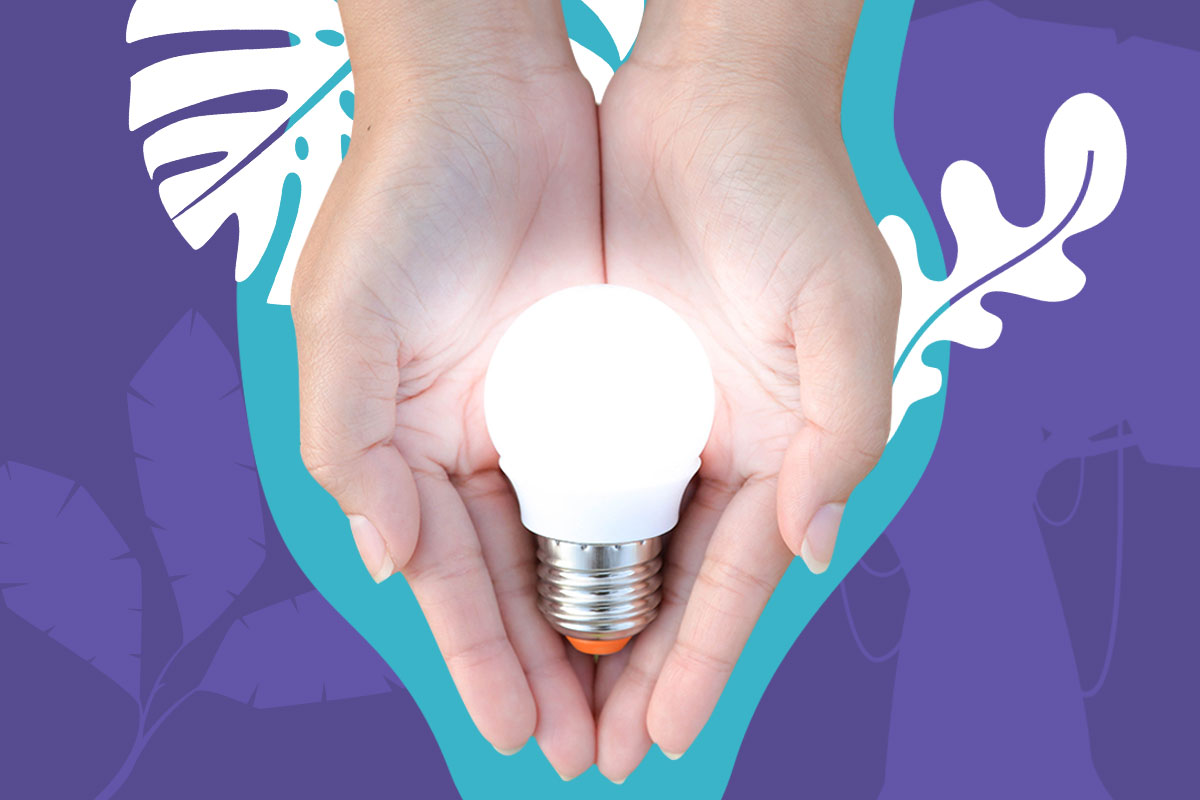The effects of LED lights on our eye health

With a long lifespan, good energy efficiency and a cheap retail price, it makes sense for many of us to opt for LED lights in our homes. But have you wondered what are the effects of LED lights on our health? Emerging evidence suggests that long-term exposure to LED light may cause adverse effects on our health. According to one study conducted in 2017 in China, LED lights are linked to a higher prevalence of myopia. The researchers discovered this link by interviewing middle school students and asking which type of lamp they use at home for study; the options being LED, fluorescent or incandescent. As compared to other light sources, LED lights were found to be associated with a 43-44% increased risk of myopia.
So, what is it about LED lights that might explain this link?
How do LED lights contribute to an increased risk of myopia?
Although the underlying reason is not perfectly understood, scientists believe that it relates to certain characteristics of LED light that differentiate it from other types of light sources.
Frequency of flicker
Electronic light sources, including light bulbs, flicker many times every second. This is usually not perceptible to the human eye because the flickering occurs very rapidly, or at high frequency. One theory is that the frequency at which LED lights flicker causes changes in the eye that result in myopia.
Colour composition
Another factor may be the colour composition of LED light. In order to understand this, it’s helpful to understand how light works in general. The sun emits various shades of red, orange, yellow, green and blue light. These different colours combine to create “white light”, or sunlight.
Some lightbulbs are manufactured to mimic sunlight and therefore emit a mix of colours to produce the same white light. For various reasons, manufacturers sometimes make lightbulbs that emit a higher amount of a certain colour.
LED lights typically contain strong green, red or blue lights, and depending on the intensity of these different colours or wavelengths of light, they may increase the risk of myopia. There is conflicting evidence though, with some studies suggesting that red light is associated with myopia, while others suggest green or blue light are the culprits.
Regardless, LED lights that have a high blue intensity may cause other types of eye problems too. Blue light is often strong in LEDs because it is high in energy. This has proven to boost alertness, improve cognitive functioning and elevate mood levels. Many appliances with LED lights tend to emit high amounts of blue light which may explain why you tend to feel more awake and alert when you switch on your phone or turn on the LED lamp on your desk.

Source: Constellation
While blue light can help improve brain functioning, too much exposure from the LED lights can cause adverse effects on our eye health.
When blue light enters the eye, it scatters, putting strain on the eye’s ability to focus which causes our eyes to fatigue. This can lead to a condition called digital eye strain (DES).
Due to its high energy, blue light can also penetrate through the eye and too much exposure may cause damage to the retina, which may increase the risk of myopia and even macular degeneration and irreversible vision loss.

Source: PupilBox
So, what should you do if you are afraid that the effects of LED lights may worsen your child’s eyes?
3 ways to protect your child from the effects of LED
1. Use red light bulbs. Sitting at the other end of the colour spectrum, red light is good for your eyes and has even been found to improve declining eyesight [2]. You can purchase red light bulbs easily online.
2. Get a pair of blue light glasses. Blue light glasses have a special lens that blocks out some of the harmful blue wavelengths. They are useful not only under LED lights but also when your child is using a smart device. Phone, tablet and laptop screens are all lit by tiny LED lights. In fact, most children spend hours on device screens daily, causing them to be constantly exposed to direct blue light through smart device screens.
3. Cut down on screen time. This last point is possibly the most important, yet hardest to implement. We all know kids love their phones and taking them away can be difficult and can sometimes bring about temper tantrums. But there are ways to make this type of e-discipline fun and exciting. Consider downloading planoApp, a parental control app, which when installed, sends reminders to your child to take regular breaks from their screen and encourages them to use their devices for no more than two hours a day. When your child demonstrates responsible screen behaviour, the app rewards them with points. This encourages your child to take matters into their own hands and try to win as many points as possible. Points can be redeemed in the planoShop to request fun, device-free activities.

Source: Adobe Stock
Staying on top of eye health: easier than you think
We all want the best for our kids, but in this ever-changing world, it’s often hard to know how to ensure they stay happy and healthy. Luckily, you’ve come to the right place. Protect your child’s eye health by following any (or all) of the tips above!
Tools Designed for Healthier Eyes
Explore our specifically designed products and services backed by eye health professionals to help keep your children safe online and their eyes healthy.
